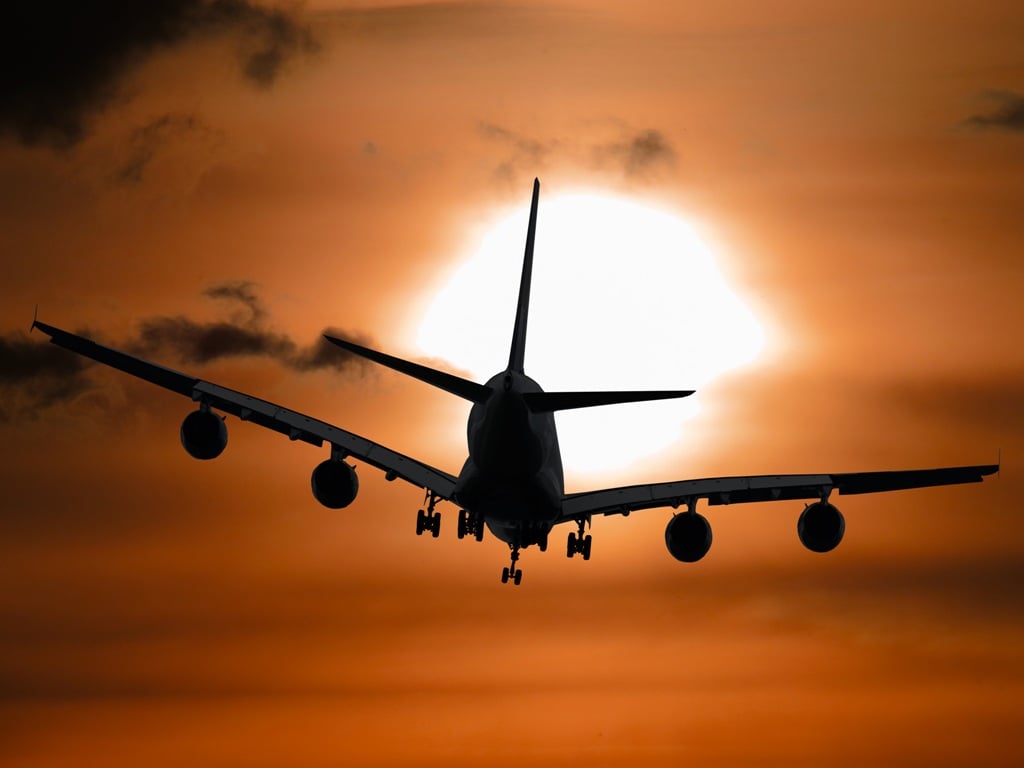When traveling with oxygen, whether by automobile or airline, there are some guidelines that you need to follow either due to regulations or simply for your own safety.
This article will focus on traveling with oxygen while flying.
Years ago, when you wanted to travel by air and needed oxygen during the flight, you were required to use the oxygen provided by the airlines. No personal oxygen devices could be used. Portable concentrators were not around yet and your source of oxygen for portability back then was primarily oxygen cylinders. To get oxygen for a flight you had to call the airlines weeks ahead of your trip and make the arrangements, providing a script for the oxygen and letter of medical necessity from you physician. Believe it or not, ALL oxygen cylinders (and they were cylinders) were kept only at the Pittsburgh Airport. There were NO available cylinders at any other airport in the country that could be commandeered for a flight. The airlines really did not want to handle oxygen patients and so they charged dearly for this service. The airlines charged you a flat fee of $200.00 per leg of your flight. Going to Florida with a layover in Atlanta? That would cost you $400.00 one way. And of course, there is the return trip home…another $400.00. Insurance companies would not cover this cost so this would be out of your pocket. I find it very ironic that even today, you cannot take any form of oxygen cylinder on board an aircraft because it is considered a hazard, yet back then, that is what the airlines provided to folks who required oxygen on their flight.
Let’s switch to present day where air travel with oxygen is not the pain it used to be. Again, you cannot bring any high-pressure oxygen cylinder on board any aircraft. The days of airlines providing oxygen are also over. (Say goodbye to those $200.00 per leg fees). This is all due to the creation and success of the portable oxygen concentrator. Portable oxygen concentrators generate oxygen by removing nitrogen from our environmental air, leaving a high percentage of oxygen, which works very well for most patients. Portable concentrators used to have to go through a process to be approved for use on the airlines but today, all portable concentrators are FAA approved for air travel. If you are traveling by air and have a portable oxygen concentrator that you are bringing for the flight there are a few things that must be done before you get to the airport:
- Book your flight well ahead of your planned departure date. When you book your flight, tell the airline that you have and will be using a portable oxygen concentrator.
- Allow plenty of time for check-in.
- You will need to have in your possession your current oxygen script as well as a letter of medical necessity from your doctor.
- You will need a minimum number of batteries that will last you three times (150%) the length of your flight. Again, check with your specific airline as not all airlines are the same.
- Your portable concentrator will not count as a piece of carryon luggage. You will not be charged for this. (With some airlines now charging for everything extra, it’s wise to double check that your portable will not be considered carry-on luggage)
- Do not think that you will be able to plug into a power outlet on the airplane. Airlines do not want to be responsible for what happens to you should the power outlet fail.
- Keep your A/C charge cord with you instead of in your suitcase so that you can plug your concentrator in at the airport departure gate while waiting for your flight. This will maximize your initial battery life.
If you want peace of mind when traveling by air and needing oxygen, look no further than the OxyGo and OxyGo Fit portable oxygen concentrators. The OxyGo is a 5 setting portable concentrator that weighs just 4.8 lbs. and is very quiet at 39 decibels. Battery life is 4.5 hours at a setting of 2 and when you run out of battery life, switching batteries can literally be done in seconds. An optional larger battery will last up to 9 hours and 40 minutes before needing recharged. The OxyGo puts out the highest oxygen output of any portable concentrator on the market today.
The OxyGo FIT weights just 2.8 lbs. and has 3 settings. The battery lasts 2.25 hours at setting two. It also has an optional larger battery, which will lasts 4.5 hours at setting 2.
Both concentrators are approved to be used during sleep so you don’t need any additional oxygen devices for your trip.
Ask your homecare dealer about the OxyGo and OxyGo FIT.
ENJOY YOUR TRIP!!




.png?width=767&name=COPD%20in%20the%20cold%20(2).png)









